Hanfu Culture and Its Timeless Heritage

Hanfu culture, the traditional clothing of the Han Chinese, is more than just stunning attire—it’s a vibrant symbol of China’s heritage. Flowing robes, intricate embroidery, and timeless designs make hanfu a cultural treasure that’s captivating the world in 2025. From ancient roots to modern runways, hanfu culture reflects 5,000 years of elegance and etiquette. Let’s explore why hanfu remains iconic, its historical journey, and how it’s shaping global fashion today.
Picture this: flowing robes with tassels, intricate floral embroidery, and ancient beadwork—young folks rocking hanfu on the streets, standing out in the best way. Hanfu, the traditional clothing of the Han Chinese, isn’t just stunning; it’s a cultural treasure that’s been turning heads for centuries. If you’re charmed by its elegance, join us as we dive into the world of hanfu culture, its history, and why it’s still so special today. Let’s get started!
What Is Hanfu Culture? Understanding Its Roots
Hanfu Explained
Hanfu, also called Han clothing, Han attire, or Hua attire, is the traditional dress of the Han Chinese. Nope, it’s not just from the Han dynasty—it’s the whole system of Han ethnic clothing across history. Think of it as China’s iconic fashion, totally distinct from other cultures’ traditional outfits. Hanfu screams “land of etiquette,” “embroidered splendor,” and “silk country,” carrying the legacy of incredible dyeing, weaving, and embroidery techniques. It’s tied to over 30 Chinese intangible cultural heritages and protected crafts, making it a living piece of art.
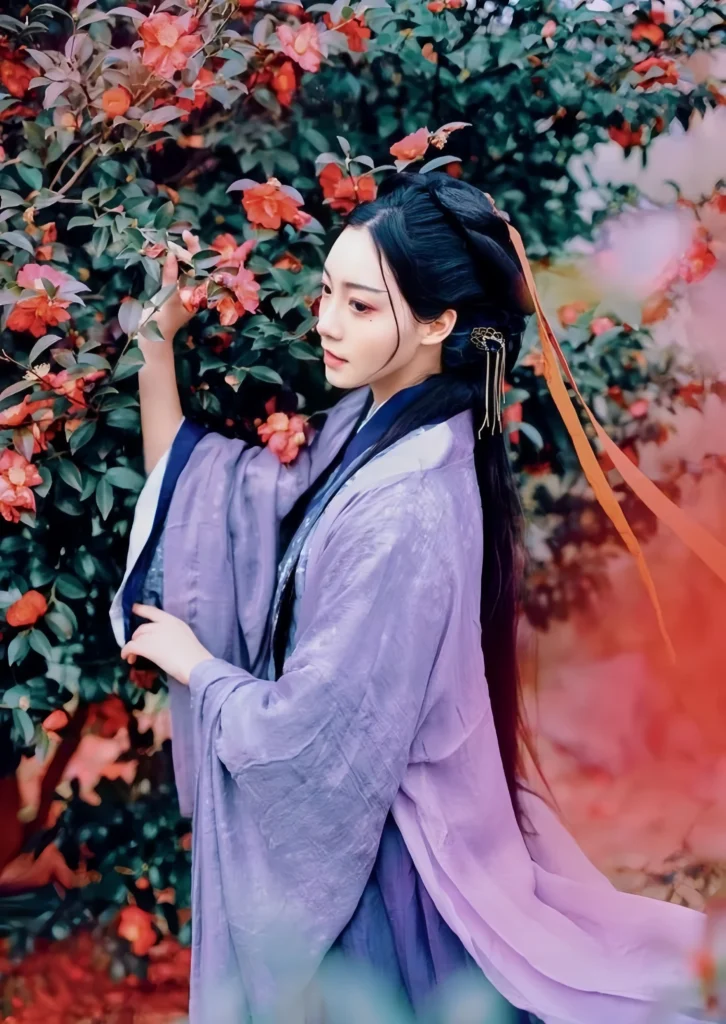

Where Did Hanfu Come From?
Hanfu’s story goes way back to ancient China. According to The Records of the Grand Historian, the legendary Yellow Emperor created clothing, saying, “Before Yellow Emperor, there were no clothes or houses.” He introduced garments, houses, and burial practices, saving people from hardship.
But modern archaeology tells a slightly different tale. Around the Yangshao culture (thousands of years ago), early Chinese folks were already farming and weaving. They made clothes from hemp, and Yellow Emperor’s wife, Leizu, is credited with inventing silk by raising silkworms. From there, hanfu evolved, getting fancier and more refined over time.
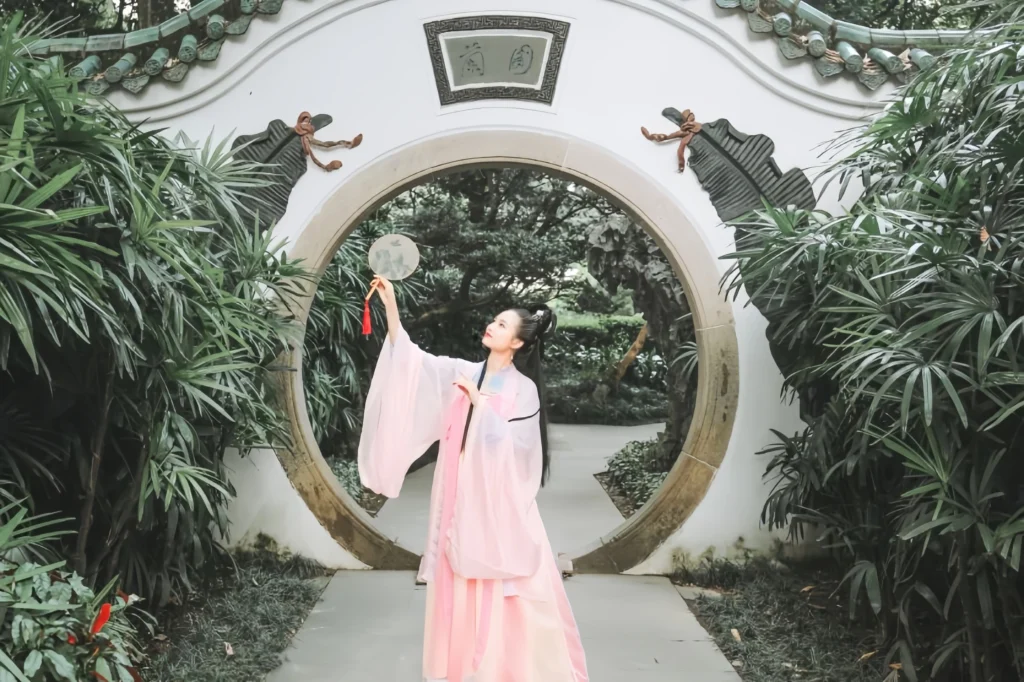
Hanfu’s Structure and Historical Journey
How Is Hanfu Designed?
Hanfu isn’t just a dress—it’s a full-on system of clothing, headwear, hairstyles, makeup, shoes, and accessories. It’s usually made from fabrics like cloth or silk, with a structure that includes parts like the collar (ling), front flap (jin), side flap (ren), hem (ju), sleeves (xiu), sleeve ends (mei), belt (dai), and apron (fu). Here are the six key features that make hanfu stand out:
- Symmetrical Design: Hanfu is crafted by folding two equal-length fabric pieces for the front and back, sewn at the center. A straight-collar shirt (zhiling duijin) has no side flap, while a slanted-collar shirt (xieling youjen) adds two side flaps for that classic right-over-left look.
- Whole-Fabric Cutting: Hanfu uses complete fabric pieces to minimize waste, reflecting China’s “less is more” philosophy. It’s all about keeping the fabric intact and natural.
- Vivid Patterns: Hanfu rocks animal, plant, or geometric designs. Animals and plants look super lifelike, while geometric patterns are neat and symmetrical.
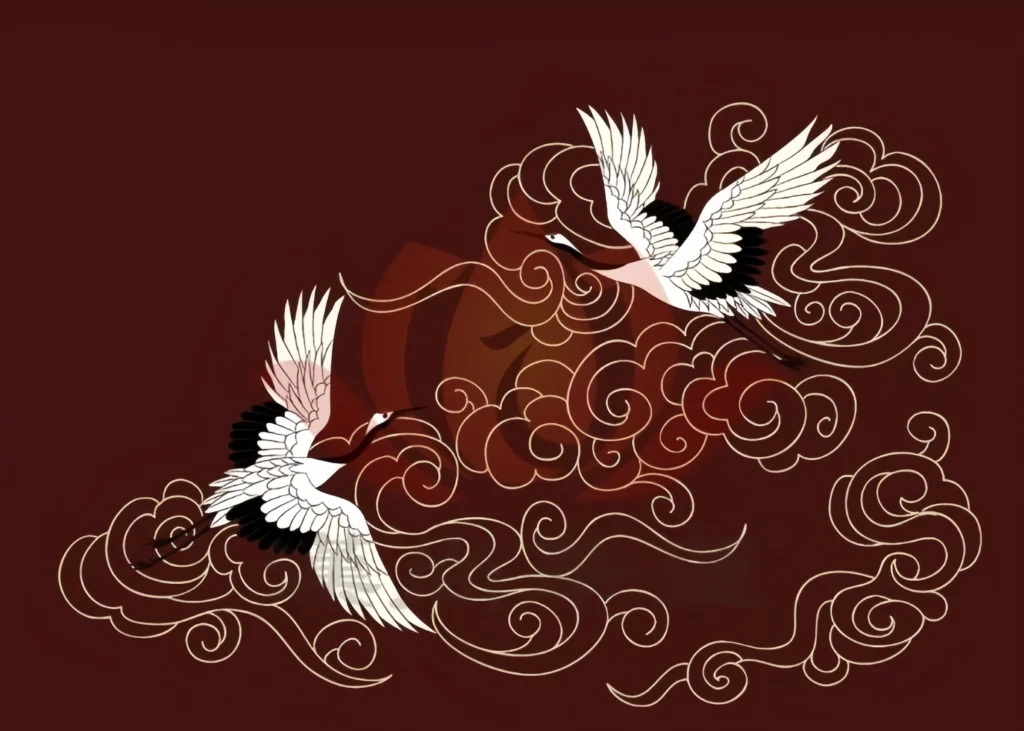
- Color Rules: The Han Chinese saw five colors—blue, red, black, white, yellow—as “true colors.” Each dynasty had its faves: black for Xia, white for Shang, red for Zhou and Han, yellow for Tang (super fancy, reserved for emperors later), and red again for Ming.
- Meaningful Accessories: Accessories are a big deal! Think jade pendants (“a gentleman never parts with jade”), knee covers (bixi), shawls (pibo), socks, scarves, sashes, swords, seals, tablets (hu), belts, and more—all with symbolic vibes.
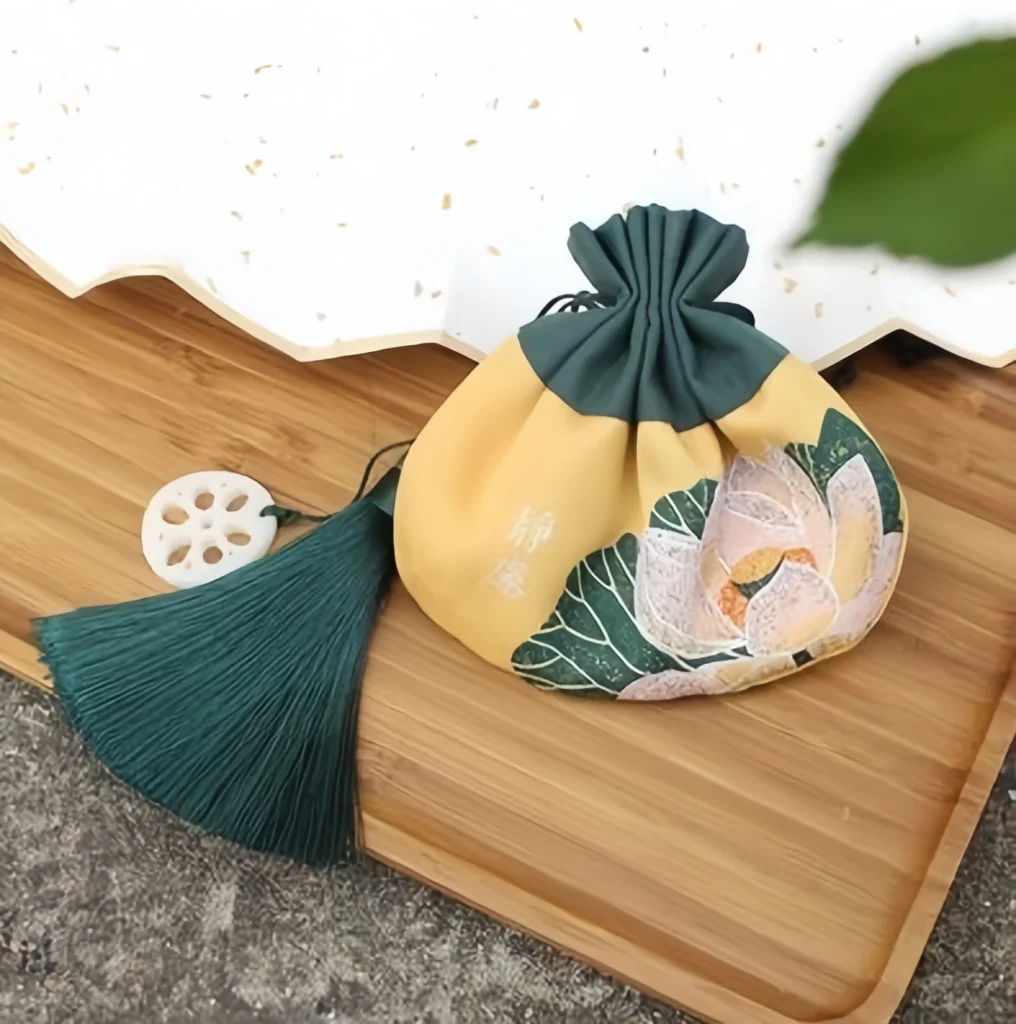
- Fancy Materials and Craft: Hanfu uses hemp, silk, cotton, wool, or leather, with strict rules for textures and patterns. China’s dyeing and weaving, especially silk, were world-class, setting hanfu apart globally.

Hanfu’s Evolution Through History
Discover interesting facts about Hanfu styles across different dynasties.
Hanfu’s style changed with each dynasty, reflecting culture, politics, and fashion trends. Here’s a quick trip through its history:
Shang and Zhou Dynasties: Strict rules set in, with “top and skirt” (yishang) styles and jade accessories. Zhou made clothing part of “ritual order,” with clear ranks for nobles and commoners. Think military outfits, court robes, or di yi (queen’s ceremonial dress).
Example: Di yi—super regal court attire.
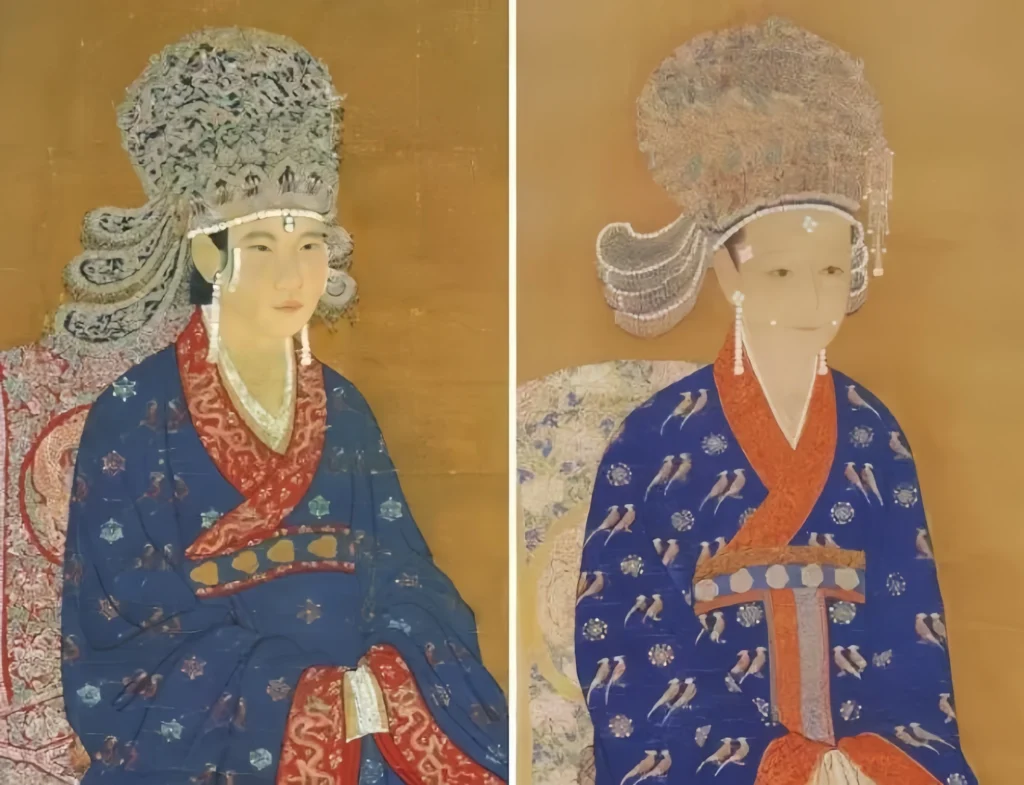
Spring and Autumn/Warring States: Regional styles popped up, with finer fabrics and more variety. Deep robes (shenyi) connected tops and skirts, while Hu attire (short jackets, pants, boots) was practical for movement.
Example: Hu attire—short and sporty.
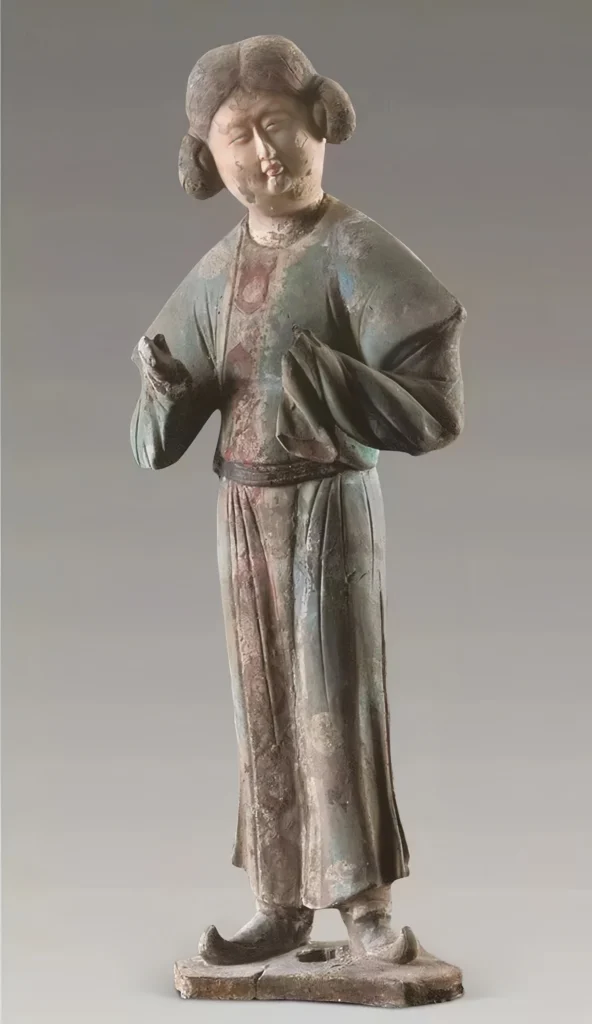
Qin and Han Dynasties: Unified China meant unified fashion. Black was the VIP color for Qin, red for Han. Robes like curved-hem (quju) or straight-hem (zhiju) were iconic.
Example: Qin’s armored war outfits.

Wei-Jin and Southern/Northern Dynasties: Flowy and free-spirited, with wide belts and loose robes reflecting the era’s “live your truth” vibe.
Example: Jin ru (Jin dynasty skirts).
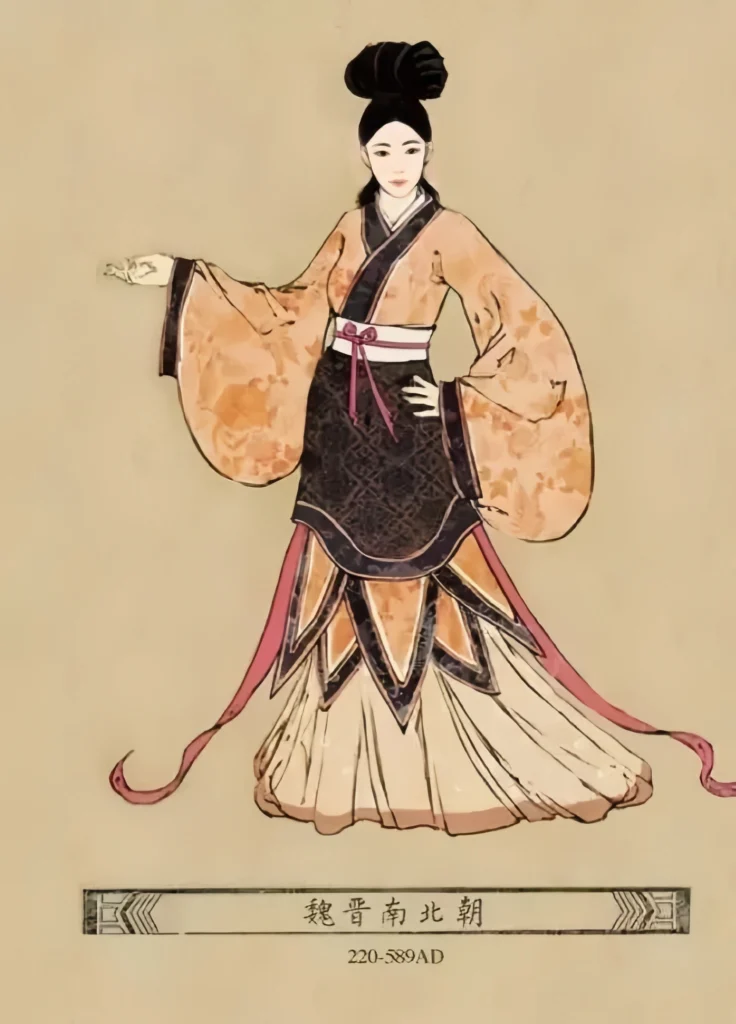
Tang Dynasty: Bold and glamorous, Tang hanfu mixed Chinese and foreign styles, with vibrant colors and intricate designs.
Example: Ruqun (top-and-skirt sets).
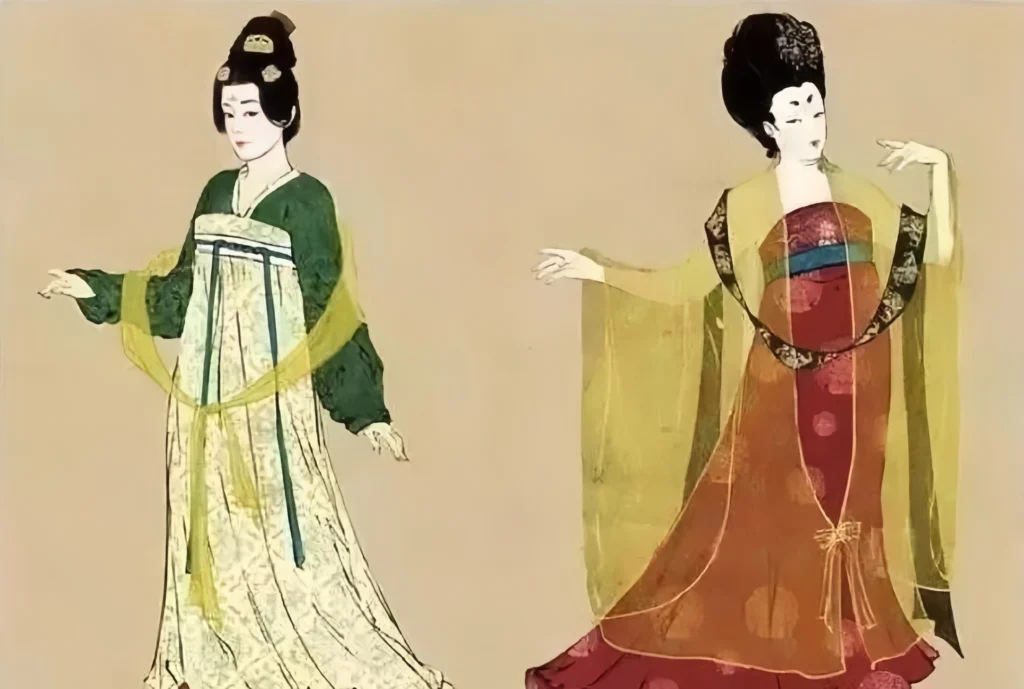
Song Dynasty: Simple and elegant, influenced by Confucian “keep it chill” ideals. Outfits got closer to modern styles, with beizi (jackets) and Song ku (pants).
Example: Zhidao (straight robe).
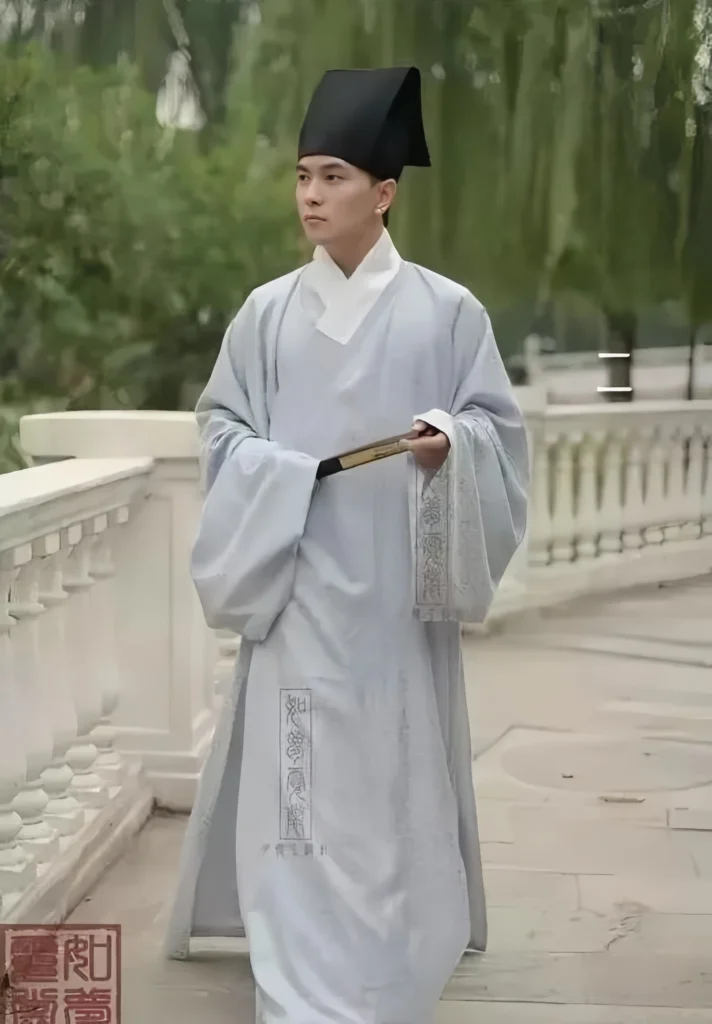
Ming Dynasty: Stately and classic, blending Zhou, Han, and Tang vibes. Women wore flower crowns and big-sleeve robes, men rocked round collars and long coats.
Example: Bijia (sleeveless jackets).
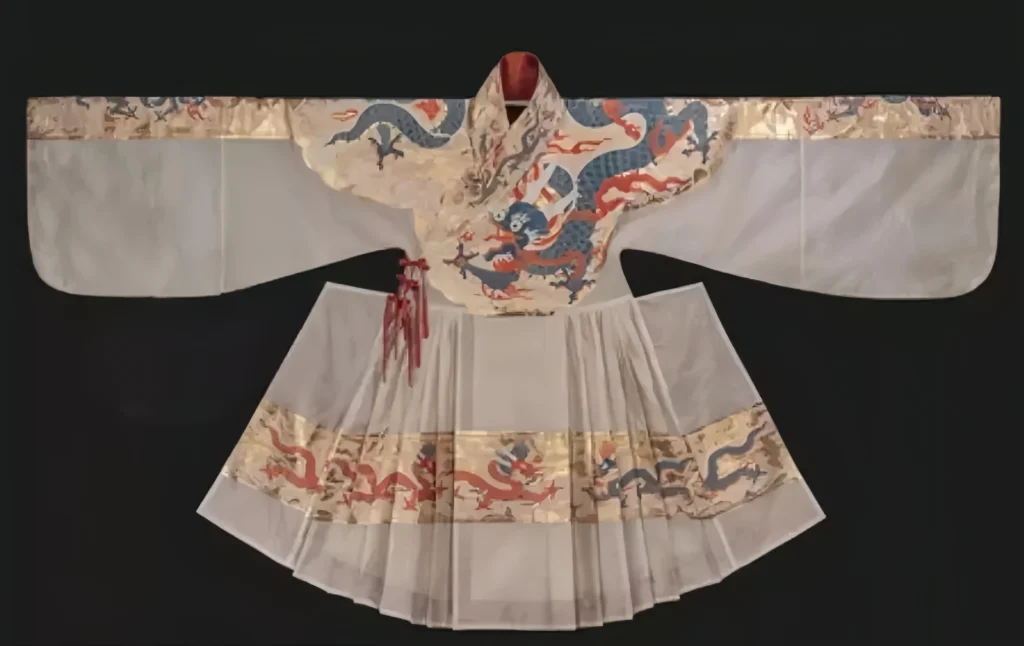
Modern Era: Today’s hanfu mixes traditional cuts with modern flair, creating fresh, fashionable looks.
Example: Zen tea outfits—modern hanfu with a chill vibe.
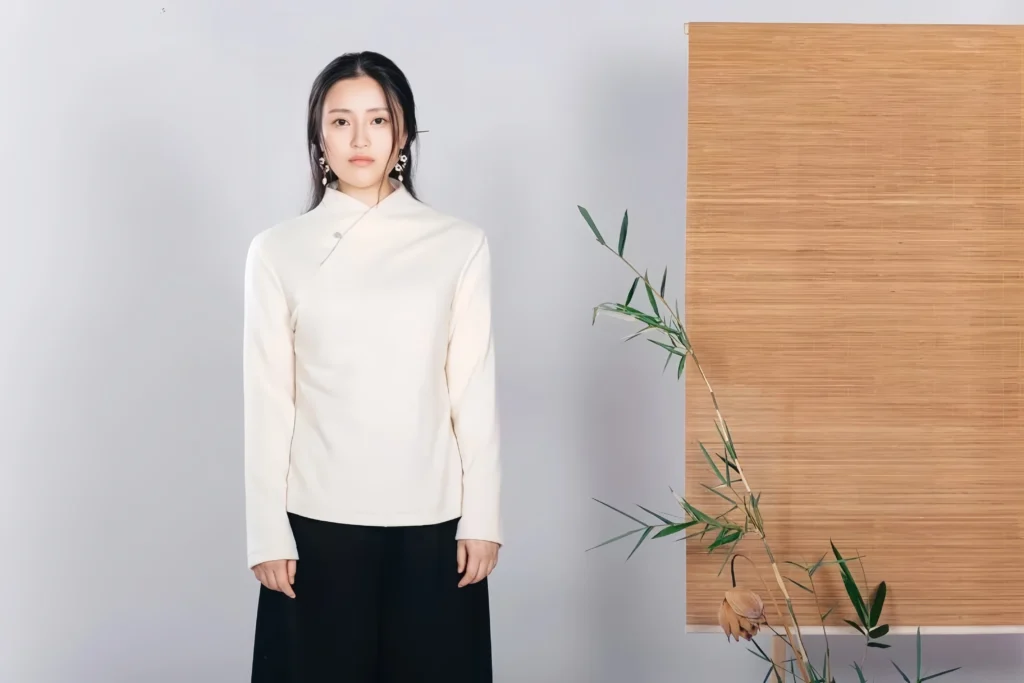
The Cultural Heart of Hanfu
In ancient China, clothing wasn’t just about covering up, staying warm, or looking good—it carried deep cultural and political meaning. Hanfu reflects 5,000 years of China’s “land of etiquette” legacy, showcasing its vibrant civilization and spirit. As Zuo Zhuan puts it, “China is great for its rituals, hence called Xia; beautiful for its clothing, hence called Hua.” That’s why China’s known as the “land of refined attire and etiquette.” Here are five ways hanfu’s culture shines:
“Heaven and Human Unity” Design: Hanfu’s style reflects the ancient idea of harmony between humans and nature. Wide sleeves symbolize the “roundness” of heaven’s way, while shenyi robes show fairness and inclusivity—core Eastern values. This gives hanfu a deep, soulful charm.
Cross-Collar Right Flap Order: The jiaoling youjen (cross-collar, right-over-left) style carries cultural weight. In ancient China, “left” and “right” hinted at status—sometimes “right” was higher, sometimes “left.” Hanfu’s right-flap design weaves this sense of order and tradition into every outfit.

Five Elements and Colors: Hanfu colors sync with nature’s cycles. By the Western Han, emperors wore seasonal colors (sishi yi), and the Eastern Han tied five colors (spring blue, summer red, mid-summer yellow, fall white, winter black) to the Five Elements. This system lasted until the Qing, showing hanfu’s natural, balanced beauty.
Balanced Elegance: Hanfu nails the Chinese ideal of “middle harmony” (zhonghe), blending form and meaning. It reflects social etiquette, personal status, and aesthetic charm, creating a polished, meaningful look.
Etiquette in Action: Hanfu is a walking symbol of Chinese ritual culture. From the Four Books and Five Classics to Zhu Xi’s Childhood Teachings, clothing was the start of propriety. Hanfu’s system covers ranks, family ties, politics, and Confucian values like kindness and respect, with specific outfits for worship, holidays, ranks, weddings, and funerals.
Wearing Hanfu with respect to its cultural heritage enhances your appreciation of its timeless legacy.
The Historical Evolution of Hanfu
Hanfu culture evolved with each dynasty, mirroring China’s political and social shifts. In the Shang and Zhou dynasties, strict “ritual order” defined attire, with jade-heavy court robes like di yi. The Qin and Han eras unified styles, favoring black and red. Tang dynasty hanfu was bold, blending foreign influences, while the Ming dynasty revived stately designs like bijia jackets.
Today, hanfu culture fuses tradition with modern flair. Zen tea outfits and festival wear are popular, as seen in events like the Luoyang Hanfu Festival. This revival showcases hanfu’s adaptability, keeping its heritage alive.
Why Hanfu Culture Resonates Today
Hanfu’s modern comeback is no accident. Here’s why it’s thriving in 2025:
- Cultural Pride: Hanfu embodies China’s “land of etiquette,” boosting ethnic unity. Like Japan’s kimono, it’s a badge of identity.
- Global Appeal: Hanfu’s elegance attracts fashion enthusiasts worldwide, featured in blogs like Vogue China.
- Sustainability: Whole-fabric cutting aligns with eco-conscious trends, minimizing waste.
- Social Media Buzz: Platforms like Douyin showcase hanfu in viral videos, driving demand.
- Versatility: From daily wear to wedding attire, hanfu fits modern lifestyles.
Hanfu culture’s influence is evident in cities like Luoyang, where the ancient city of Luoyi hosts hanfu parades, drawing global tourists.





[…] If you want to know more about the inheritance of Hanfu culture:Hanfu Culture and Its Timeless Heritage […]